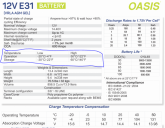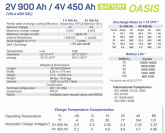kimsv
New Member
- Joined
- Dec 29, 2019
- Messages
- 35
Well, you’re somewhat correct. It’s not that you’ll need to heat regular LFPs all the time in sub zero temp, but only until they’re above 0°C. After that the charging most likely heats them “naturally”. But I agree with you in some ways, it feels stupid to use power to be able to collect power. That’s why LiFeYPO4 and LTO seems like such better options, as they can handle cold.I'm new at this but using battery power to heat up Li batteries to a working voltage doesn't seem like a workable solution to me.
To state the obvious; the primary use case for these would be northern locations in the winter time. By definition the sun is low and there is very little insolation available to the PV panels for charging the batteries in the first place. And no extra juice for the "overhead" of heating cells.
Call me old fashioned, but, No thanks! I'll stick to my SLA's for now.
I know lead-acid is not the sexy new thing but they've been sitting outdoors and starting cars up here for years and will continue to be used 'till something better comes along.
The biggest difference, in my opinion, between the good old lead-acid and these new ones is the ability to accept charge extremely fast. Especially in a winter solar situation where you really need all you can possibly get, or only need to run the alternator for a very short time to top it up. Sure, more expensive up front, but way cheaper down the line for every available kWh. Each to their own, just my two watts..?




